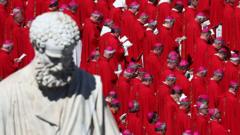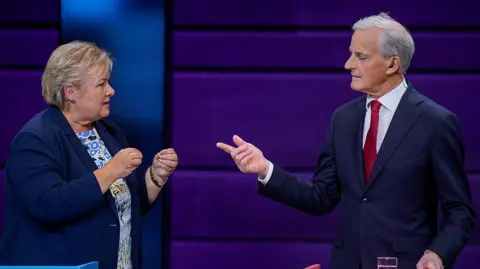In mere days, 133 cardinals from around the globe will gather in the historic confines of the Sistine Chapel, embarking on one of the most secretive elections in the world—the choosing of the next pope. Each cardinal, having sworn an oath on the gospels, is committed to maintaining undisclosed details for life, ensuring a sacred and confidential atmosphere throughout the conclave. This solemn assembly helps to eliminate any external influences and distractions that could sway the decision-making process.
As part of the stringent rules to uphold the sanctity of the election, everyone present—including medical personnel and culinary staff—must pledge to keep their observations under wraps. To further ensure an undisturbed atmosphere, the Sistine Chapel and the nearby guest facilities undergo thorough sweeps to eliminate electronic devices, while rigorous measures prevent wireless communications. Renowned journalist John Allen notes that the Vatican prioritizes isolation, deploying electronic jammers to disable any phone or Wi-Fi signals.
This total lockdown serves a dual purpose: to preserve the confidentiality of the voting proceedings and to safeguard against any potential external disruption, a vital consideration given the weight of decisions being made. Once inside, cardinals must surrender all electronic devices, thereby severing any connection to the outside world—there are no radios, newspapers, or televisions allowed, as emphasized by Monsignor Paolo de Nicolo.
Despite official silence required of the cardinals, the atmosphere leading to the conclave is rife with speculation. The press is keenly tracking cardinals even before the election, with reports akin to "cardinal-hunting" surfacing across media outlets. Observers note the different establishments the cardinals frequent, analyzing their social interactions for clues that might reveal alliances or potential frontrunners.
While maintaining religious decorum, the significance of the papal role remains evident; the elected pope will wield significant influence over global issues, from moral authority to political resolution. This confluence of faith and influence ensures that the deliberations and voting are vital to the Church's future direction.
In a twist of competitive media scrutiny, discussions surrounding presumed candidates have generated buzz; for instance, one cardinal was criticized for appearing to campaign for himself while another unintentionally sparked notoriety through a viral video.
As the conclave approaches, those in attendance are preparing for a process laden with gravity and solemnity. With significant numbers of newer cardinals, there is a sense of uncertainty surrounding who will ultimately prevail. Within this cocoon of secrecy, the right balance of personal conviction and collective decision-making will guide the arduous task of electing the next leader of the Catholic Church. The electors are expected to take their places, ready to enter a realm where faith and commitment converge on an extraordinary journey that shapes the course of Catholicism for generations to come.
As part of the stringent rules to uphold the sanctity of the election, everyone present—including medical personnel and culinary staff—must pledge to keep their observations under wraps. To further ensure an undisturbed atmosphere, the Sistine Chapel and the nearby guest facilities undergo thorough sweeps to eliminate electronic devices, while rigorous measures prevent wireless communications. Renowned journalist John Allen notes that the Vatican prioritizes isolation, deploying electronic jammers to disable any phone or Wi-Fi signals.
This total lockdown serves a dual purpose: to preserve the confidentiality of the voting proceedings and to safeguard against any potential external disruption, a vital consideration given the weight of decisions being made. Once inside, cardinals must surrender all electronic devices, thereby severing any connection to the outside world—there are no radios, newspapers, or televisions allowed, as emphasized by Monsignor Paolo de Nicolo.
Despite official silence required of the cardinals, the atmosphere leading to the conclave is rife with speculation. The press is keenly tracking cardinals even before the election, with reports akin to "cardinal-hunting" surfacing across media outlets. Observers note the different establishments the cardinals frequent, analyzing their social interactions for clues that might reveal alliances or potential frontrunners.
While maintaining religious decorum, the significance of the papal role remains evident; the elected pope will wield significant influence over global issues, from moral authority to political resolution. This confluence of faith and influence ensures that the deliberations and voting are vital to the Church's future direction.
In a twist of competitive media scrutiny, discussions surrounding presumed candidates have generated buzz; for instance, one cardinal was criticized for appearing to campaign for himself while another unintentionally sparked notoriety through a viral video.
As the conclave approaches, those in attendance are preparing for a process laden with gravity and solemnity. With significant numbers of newer cardinals, there is a sense of uncertainty surrounding who will ultimately prevail. Within this cocoon of secrecy, the right balance of personal conviction and collective decision-making will guide the arduous task of electing the next leader of the Catholic Church. The electors are expected to take their places, ready to enter a realm where faith and commitment converge on an extraordinary journey that shapes the course of Catholicism for generations to come.




















